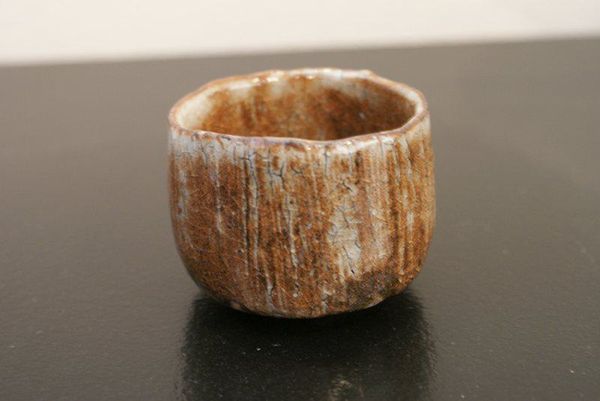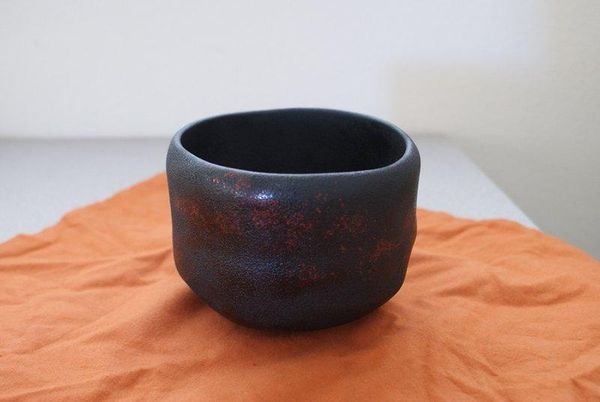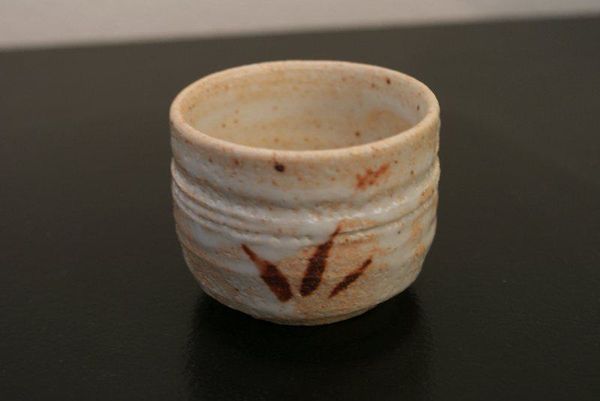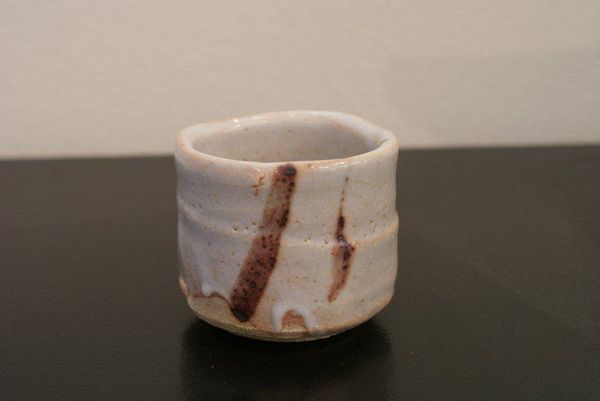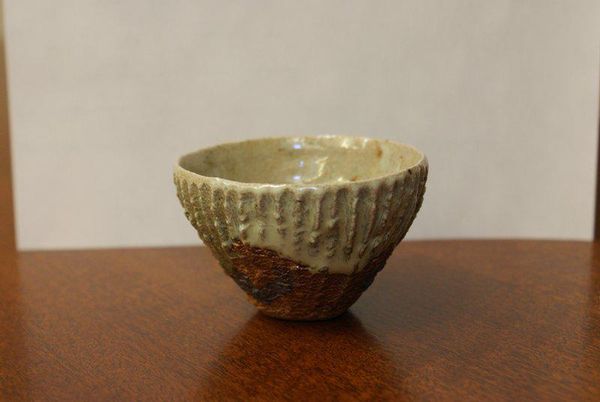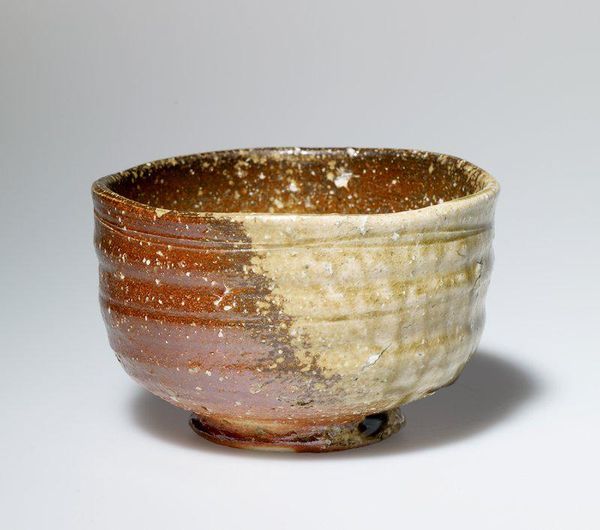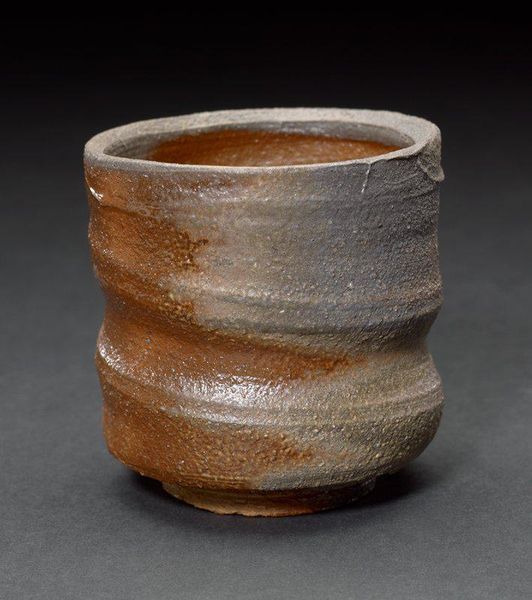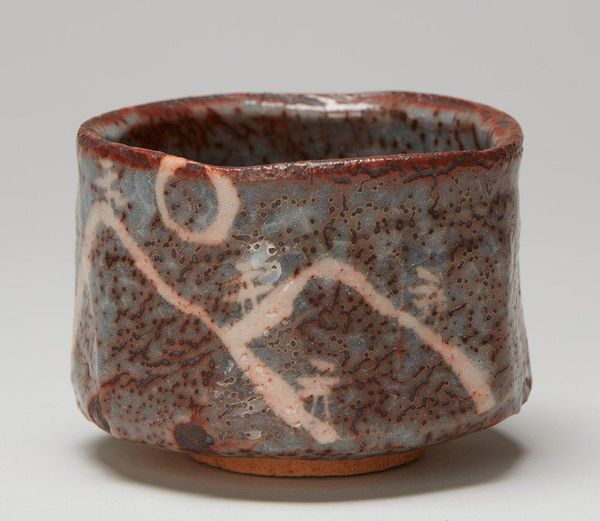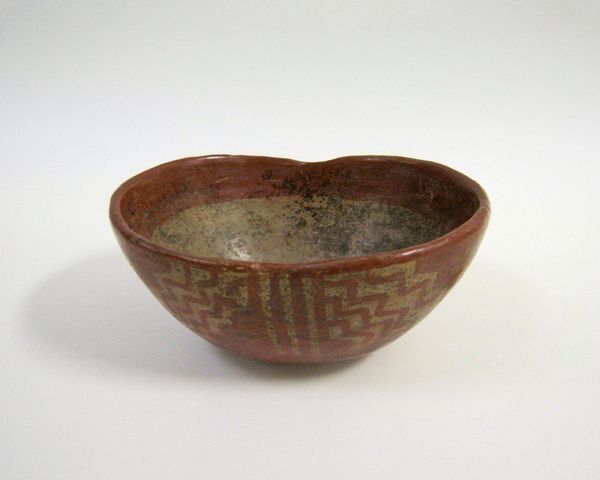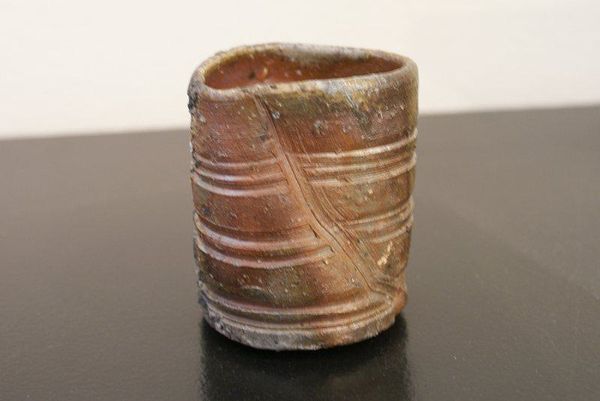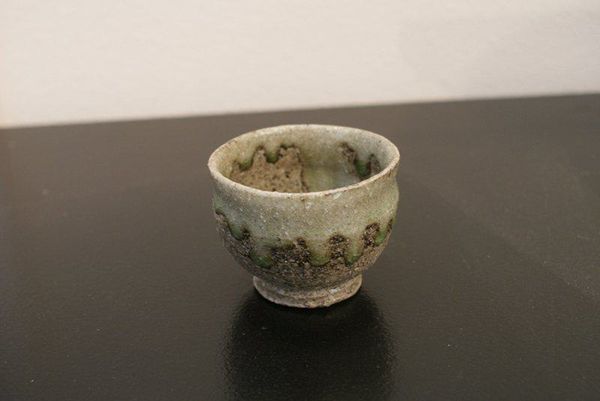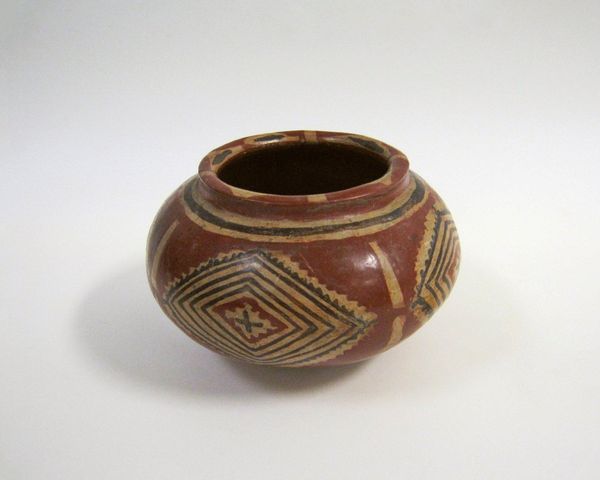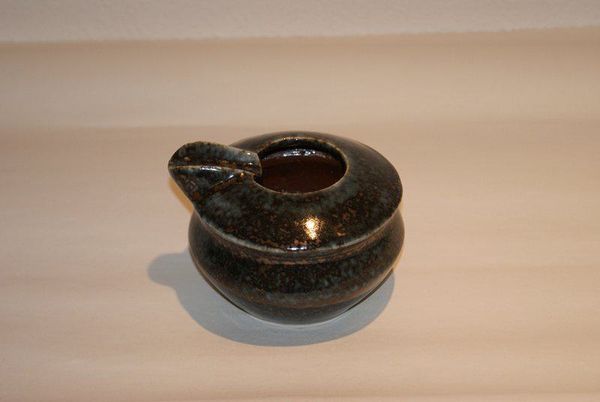
ceramic, earthenware
#
ceramic
#
earthenware
#
stoneware
#
food art
Dimensions: 2 5/16 × 2 3/4 in. (5.87 × 6.99 cm)
Copyright: No Known Copyright
Curator: This charming object is a sake cup, also known as a "guinomi." The artist is Kumagae Kōshū, and it dates from the early 21st century. It's crafted from ceramic and earthenware, with touches of stoneware too. Editor: Immediately, I'm drawn to the earthy color and texture. It feels grounded and almost rustic, despite likely being a contemporary piece. There's a wonderful sense of tactility; I imagine the slightly uneven surface feels warm and comforting in the hand. Curator: Indeed, the warmth is striking. The cup form allows us to focus on the making of pottery. It has vertical streaks running along the outer wall that speak to the actions and materials. Think about the clay itself, the skill and tools employed, and also the entire studio context—the kiln, and the tradition the artisan belongs to. Editor: It’s interesting you highlight the studio context because this object, of course, sits in a much wider cultural landscape. This isn't just a drinking vessel; it's a carefully presented object, both functionally and within museum display cases like the one we're viewing now. Sake culture itself is deeply entwined with ritual and hospitality and the presentation is carefully crafted to shape our perception. Curator: Exactly! We often separate art from craft, but this blurs the boundaries, raising the question: When does a utilitarian object become art? We could analyze this by considering the production of such vessels in Japan versus mass-produced ceramic ware sold around the world, each implicating systems of labor. Editor: And considering its journey, from artist’s workshop to a collector's home, perhaps then finding its way into a museum. These steps greatly contribute to how it is understood. Public accessibility through collections can give greater context, for instance through access to research or by comparing it with other works from the same region. Curator: It certainly shifts the focus from simple consumption to cultural significance. Even the material itself carries weight—the choice of earthenware, the glaze used. What story do these specific materials and methods tell us about craft traditions in Japan? Editor: Thinking about our role, the presentation influences this heavily. How we display it, light it, position it within thematic groupings all actively influence the narrative and the drinking experience. Curator: Ultimately, I find that this humble sake cup sparks reflection on the value and circulation of handmade objects today. Editor: And I see how its presence in a museum helps to elevate what we might consider mundane objects into symbols of cultural importance and aesthetic pleasure.
Comments
No comments
Be the first to comment and join the conversation on the ultimate creative platform.
